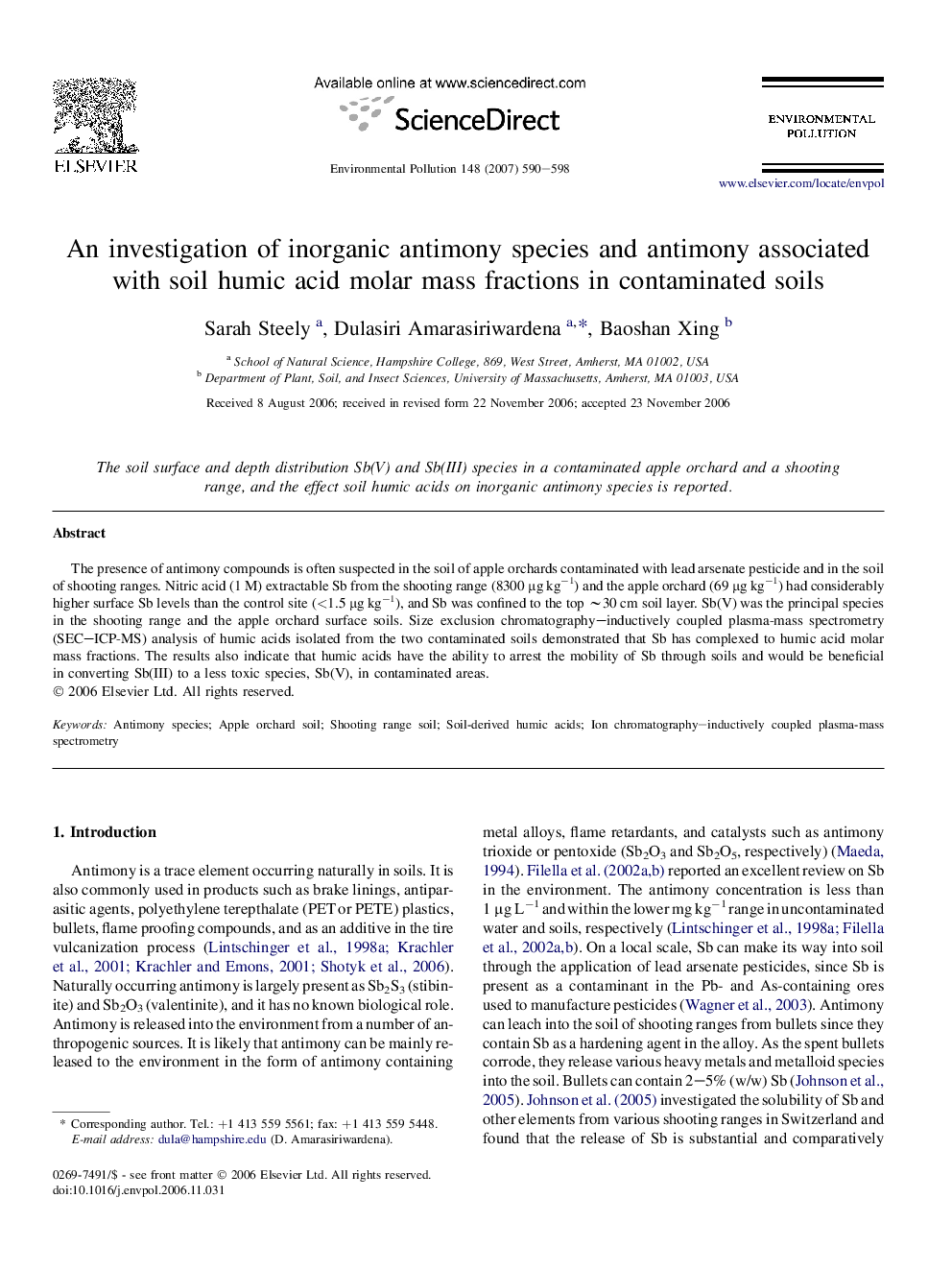| Article ID | Journal | Published Year | Pages | File Type |
|---|---|---|---|---|
| 4427625 | Environmental Pollution | 2007 | 9 Pages |
Abstract
The presence of antimony compounds is often suspected in the soil of apple orchards contaminated with lead arsenate pesticide and in the soil of shooting ranges. Nitric acid (1 M) extractable Sb from the shooting range (8300 μg kgâ1) and the apple orchard (69 μg kgâ1) had considerably higher surface Sb levels than the control site (<1.5 μg kgâ1), and Sb was confined to the top â¼30 cm soil layer. Sb(V) was the principal species in the shooting range and the apple orchard surface soils. Size exclusion chromatography-inductively coupled plasma-mass spectrometry (SEC-ICP-MS) analysis of humic acids isolated from the two contaminated soils demonstrated that Sb has complexed to humic acid molar mass fractions. The results also indicate that humic acids have the ability to arrest the mobility of Sb through soils and would be beneficial in converting Sb(III) to a less toxic species, Sb(V), in contaminated areas.
Keywords
Related Topics
Life Sciences
Environmental Science
Environmental Chemistry
Authors
Sarah Steely, Dulasiri Amarasiriwardena, Baoshan Xing,
